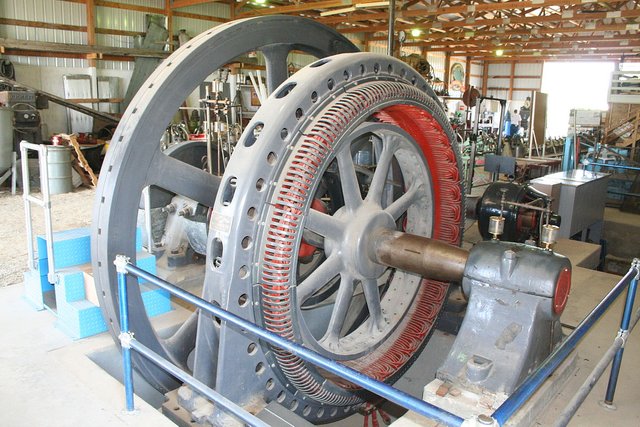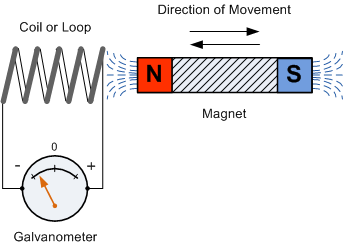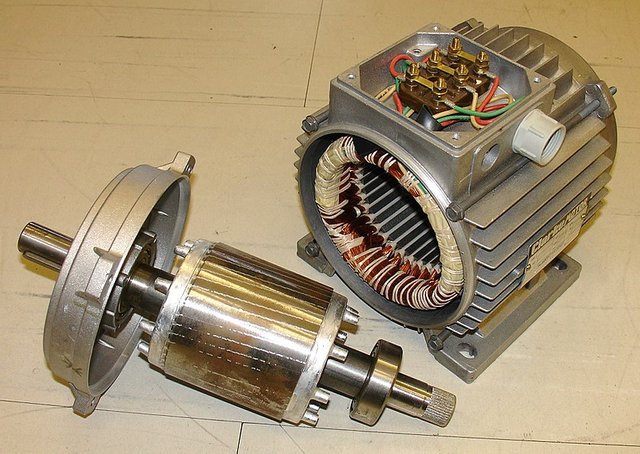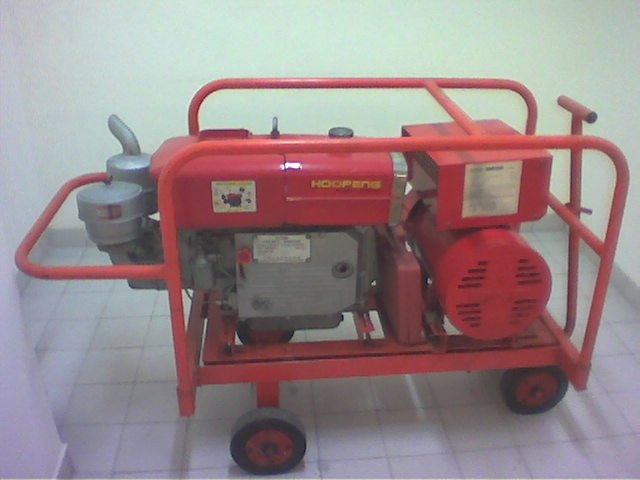GENERATORS VERSUS MOTORS; Let’s talk about Electrical Machines
Certainly, it is close to impossible to chart the course of life and undergo daily routines or chores without at a point making use of a machines.
Good day Steemians, Welcome once again to my blog, I sincerely hope you are reading this piece with the expectation of getting enlightened on what’s being discussed today on this space, it’s a cool night over here, a perfect atmosphere to talk about a very important subject matter, ELECTRICAL MACHINES
ELECTRICAL MACHINES… (AN OVERVIEW)

Electrical machine:Wikimedia commons under CCASA 3.0 license
Machines, as it were, is any device (no matter how simple) capable of simplifying or modifying from one form to another, thus a machine is involved to do the work of energy conversion (i.e potential-kinetic energy). For instance, in the case of your Car engine, the chemical energy is being converted into mechanical energy,
It’s unrealistic to assume that the energy subsisting in fossil fuels or crude oil is going to spin the wheels of your ride just because it contains a measure of energy. There are tens of articles by wonderful STEM Mechanical engineers to describe the conversion process between fuel and rotational energy that eventually is used to spin our wheels.
But on a more interesting note; I would like to take you through a course I did sometime ago on Electrical machines; in that course we only considered 3 devices which I later found out was the major emphasis when it comes to Electrical machines and that was;
The Transformer: Well I noticed that I hardly make a STEM related post without actually saying one or two things about transformers, while there are still lots of awesome things more to say about transformers, we would be focusing majorly on the other 2 aspects of Electrical Machines which is
THE GENERATORS and
THE MOTORS
LET’s Start Here (THE DEFINITION)
An Electrical Generator is simply the machine that converts mechanical energy (Specifically rotational energy) into electrical energy.
An Electrical Motor is simply the Electrical machine that converts electrical energy into mechanical energy.
So let’s think of the interplay like this, supposing you are watching that your favorite movie in the night and you happen to live in a wonderful country as mine where electricity is not so frequent.
You got to a point in that movie that is considered to be its action point and public power supply goes out, by reflex you rush out to start your generator and in the process of the rush in the dark, you break that glass cup you were using to enjoy that drink of juice. You didn’t realize you broke it till your generator was powered ad power was restored to your house, so the light was on and the next thing you thought of was how to put your floor back in shape, at that point what you needed was a vacuum cleaner (Electric motor machine) which is actually powered by your normal generator.
ELECTROMAGNETIC INDUCTION {A COMMON POINT OF THEIR OPERATION}
The basic and underlying principles via which they both operate is Electromagnetic induction which we would be talking about in the next few paragraphs;
In simple terms, Electromagnetic induction is the ability of Electricity to be induced from one end to another without the need a conductive material between both ends. This is easily achieved by either varying an electric flux around a magnetic field or a magnetic flux around a current carrying field, this process is simple enough.
This phenomenon was discovered in the year 1830 by a man named Michael Faraday, he even went on to summarize the process into a law that we now know as Faradays laws of electromagnetic induction. which I quote as:
- _”An EMF is induced by a conductor by placing the conductor on a varying magnetic field As said earlier the varying magnetic field is produced by moving either the magnet or the coil, or by even rotating the coil in the around the magnetic fieldSource
In furtherance to the above stated law;
”Faraday's second law of electromagnetic induction states that; the magnitude of the induced emf is equal to the rate of change of flux linkages (variations) with the coil ”
Just in case you don’t know what a flux linkage means, it is simply the product of the number of turns around the coil and the flux around the coil.
Would have also loved to share some formulae with us but you know, might not be of much help in making us understand its principle of operation. So let’s bring this 2 basic laws home (in relation to motors and generators)
As we have seen the possibility of emf and current being induced by varying an m-field around a coil, that’s exactly the principle of how the generators work, (REMEMBER: mechanical-electrical energy) therefore we need a mechanical energy source which would bear the coil or the magnet for motion, the motion of any of this would generate an emf (Electrical energy)
HOW ABOUT A MOTOR: This is where we would take our study on electromagnetic induction a little further to a phenomenon called: ”Mutual induction” , in a situation whereby you have 2 or more coils magnetically linked with each other (i.e the magnetic flux of one is connected to the magnetic flux of the other coil or separate coils connected to the same magnet).
The alternating current in one coil would induce a current in the other coil. While I said I won't talk about transformers today permit me to say that that’s the exact principle of operation of a transformer in its ability to transform current from one magnitude to another.
For a motor the phenomenon of mutual induction finds its application where one end of the motor is connected to a current source, when current enters the first end (usually made of a coil wounded around magnetic material) via mutual induction emf is induced on the other end (a rotating part made of a conduction bars) this conduction bar receives the current and as that law of magnetism says;
”a force exist in a current carrying conductor” that force is known a Torque (Force that causes rotation)
The current therefore in that bar creates a torque that causes the rotating part (rotor) to rotate.
WHAT EXACTLY MAKES UP GENERATORS AND MOTORS (CONSTRUCTION)
It is one thing to understand the principle behind their operation, it is another thing to know exactly what constituted in the motor basically, so let’s do a breakdown of our motors and generator.
We have different types of generators and motors which has little deviations in mode of construction, later in this post we might be looking into some of this types of machines in a more practical approach, but we would first look at its simplest form which is the DC GENERATORS AND MOTORS, one of the things to first note is that constructionally, a dc motor might not differ from a dc generator. They have the same component therefore it is safest to generally refer to it as a DC machine:
Our DC machine basically consist of two parts being the
- stator and;
- the rotor
To simplify things up; For electromagnetic induction to occur, there must be an action of a coil and a magnetic field (produced by a magnet) during the interplay, either the magnetic field or the coils rotate while the other is stationery . Consequently in a dc machine, there exist the moving part and also the stationary part, the moving part is known as the rotor while the stationary part is known as the stator.
More specific components in a DC machine is
The Yoke: this is like a frame acting as a protecting covering and offering the machine a mechanical rigidity, however, the yoke wasn’t only designed to give the machine a mechanical rigidity, as it is made of cast iron or steel it also carries magnetic flux all around the machine
The poles: In the case of a dc machine, the poles are used as a platform in which the field windings (coils) can rest, usually it is attached to the Yoke of the machine.
The Coils (Field windings): Coils used here are placed on the poles, any metallic material can be used, however the best use is always copper wire because of its economical and conductivity, advantage. Connections of coils from one pole to another is in series.
At this point, it is necessary to note that the three component stated above forms the stator (the stationery part of the machine) and in this case the field windings on the pole when energized, would produce a magnetic field with a North and South Pole, having established this fact, we would go on to talk about the Rotational parts, the rotor;
The rotor (Armature core): In the DC machine, the rotating part is basically cylindrical in shape, the core is built up with laminated steel disks having slots, this slots are used to carry the armature windings (coil). The core is laminated to prevent losses due to eddy current.
Armature winding: Like that of the field winding, is also made of copper and as said earlier, it rests on the slots, this coils are electically isolated (i.e they are not connected to each other), Infact there is a special technique of winding an armature coil in the armature core.
- Brushes and the commutator (Where the difference sets in): A dc machine consist of a pair of arrangement type that would determine if the machine would function as a motor or a generator, these pair is the brush-commutator, their job is to either take current from the armature winding (generator) or into the armature conductors (motor). Basically the commutator is a pair of copper bar of which the number of pair is equal to the number of armature slots so that at the end of the day a the segment is uniquely connected to a slot. The brushes takes the current either out or into the machine.
HOW ABOUT OUR LOCAL PORTABLE GENERATORS.
I don’t see how we can effectively talk around generators without bringing the concept home, while talking about the construction of generators and machines, i made mention of the fact that we would consider other generator types, now that generator you have in your home formally speaking is classed under a type of generator called ”Alternators”; alternators are also called ac generators, especially ac generators driven by internal combustion engines. By design, alternators operate with stationery magnetic field is used
Basically the main distinguishing difference between a dc generator and the ac generator (alternator) is the absence of the commutator, a generator made without the addition of a commutator is an ac machine, the commutator creates current reversals and prevents the output current from varying sinusoidally with time.
Another difference between both machines is the design, while the dc machine has the armature (bearing the conductors) is the rotating part and the magnetic field windings on the pole as the stationery part, the alternators construction is different, it has stationery armature windings forming the stator and rotating magnetic windings forming its rotor.
At this point I think it is time to point out the fact that the alternator is not the only component in the portable generator, most portable generators are powered by engines; engines produces the mechanical energy required to drive the rotor of the alternator.
Your portable generator comprise of lots of systems, now I might not be as detailed as @Rhaphelle our STEM Mechanic, but I will give an overview of the various systems that makes up the generator. Which are;
The alternator
The engine
The fueling system
The cooling and exhaust sytems
The lubrication system
Etc.
As we have already spoke about the alternator, we would go on to look at
- The engine: This is the component of the engine that creates the required mechanical energy to drive the rotor of the alternator,( which in this case is the magnetic field) now the engine is designed to provide a torque that would cause this rotate this rotor at a specified frequency and voltage output.
The frequency and voltage ratings varies per country, In Nigeria it is 240V 60Hz mains, in The United states 110V 60Hz, that means appliances are designed to receive voltages at this voltage and frequency, hence supply must be synchronized to give the supply;
The fueling system: This basically is the network via which the fuel circulates from the tank through the carburetor straight into the engine for combustion, the system consist of the fuel valve, fuel filter, carburetors or injectors. The tanks are always mounted on the generator for portable generators.
The control panel: every machine must have a system that governs its system of operation; the portable generator is not an exception, for safety measures, certain generators are designed to go off under those circumstances, a perfect example of such control is the circuit breaker button fitted into the generator that turns it off when subjected to connected to a load above its rating, this saves the generator from faults due to overloading.
The cooling system: Heat generated by the engines during the combustion phase can be wholesome. The cooling system of the generator is therefore used in getting rid of this excess heat.
The lubricating system: Of course we know that the generator comprises lots of moving parts especially in the engine, therefore the lubricating system majorly serves to prevent friction in the motors
CONCLUSION
In the real sense of things, the motors and the generators are interwoven in application, apart from some electronics, motors are found in most electrical machines and of course a generator must supply the required power to make it run. In fact the need for generators would be limited without the existence of motors.
REFERENCES
For further learnings, feel free to click this links
Electric motors and generators on study.com
Construction and working of a dc machine
difference between motor and generator
Elecromagnetism: electromagnetic induction
If you write STEM (Science, Technology, Engineering, and Mathematics) related posts, consider joining #steemSTEM on steemit chat or discord here. If you are from Nigeria, you may want to include the #stemng tag in your post. You can visit this blog by @stemng for more details.

You can also join us at Promo-Mentors, to improve your blogging skills. Join our discord channel and meet awesome mentors who are willing and ready to shape your writing skills.




Congratulations @lawkay! You have completed the following achievement on Steemit and have been rewarded with new badge(s) :
Click on the badge to view your Board of Honor.
If you no longer want to receive notifications, reply to this comment with the word
STOPTo support your work, I also upvoted your post!
Do not miss the last post from @steemitboard:
SteemitBoard World Cup Contest - Home stretch to the finals. Do not miss them!
Participate in the SteemitBoard World Cup Contest!
Collect World Cup badges and win free SBD
Support the Gold Sponsors of the contest: @good-karma and @lukestokes
I hope you know above is only applicable to us here :)
#smiles...
I know perfectly...
I also see brighter days ahead
This post has been voted on by the steemstem curation team and voting trail.
There is more to SteemSTEM than just writing posts, check here for some more tips on being a community member. You can also join our discord here to get to know the rest of the community!
The principle of electromagnetic induction has got a vital part to play in energy generation (generators), distribution (transformers) and usage.
All we can say is thank you to Faraday!